Breeding methods for Tradescantia at home
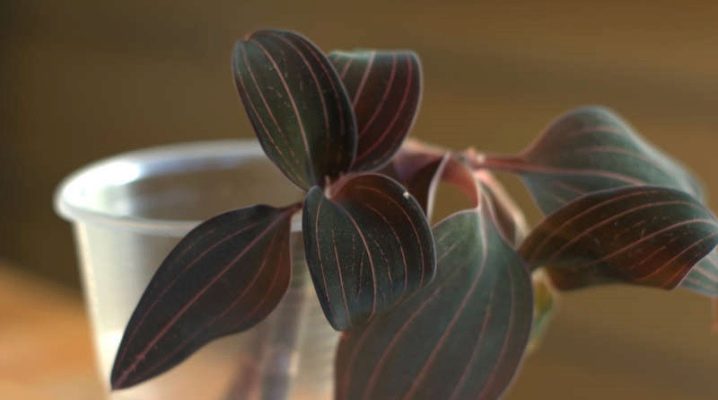
Tradescantia is a plant with long climbing shoots of the Commelin family, suitable for growing both indoors and in flower beds. It has been known to flower growers since the 17th century. Among lovers of home floriculture, Tradescantia has received universal recognition for its ease of care and unpretentiousness in keeping conditions. Today we will tell you how you can propagate Tradescantia at home.
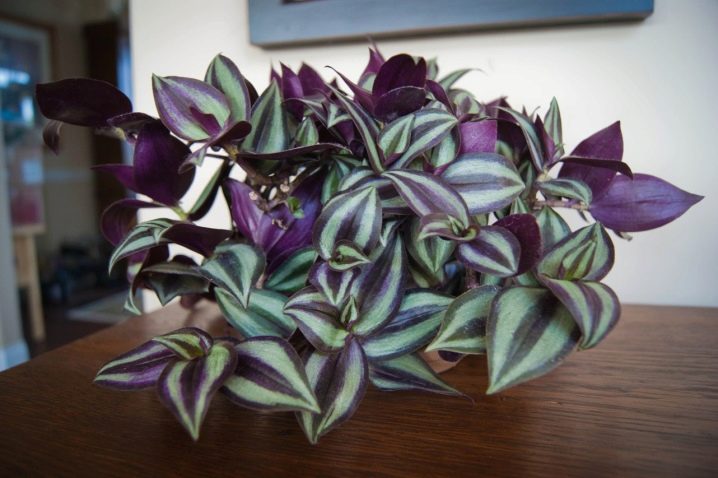
Description
First, let us introduce you to this plant. The main decorative effect is provided by multiple branches with amazing leaves, painted in a variety of color options - from green (with its various shades) to blueberry, and some varieties have leaves with original stripes. A cascade of well-groomed plants with lush foliage resembles a magical waterfall. Tradescantia blooms with nondescript flowers, which, with their appearance, do not particularly inspire contemplators, therefore many design experts recommend picking the buds.
Modern breeders are constantly working on the creation of new scenic varieties of Tradescantia, the demand for which continues to grow, thanks to simple plant care and simple breeding methods.
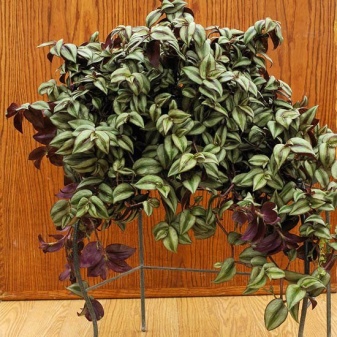

Reproduction methods
The best time to breed Tradescantia is spring. You can do this at other times of the year, it is not recommended only in winter. Do not forget to always take into account one subtlety: these plants have very fragile brittle stems, be extremely careful when working with them. Tradescantia can be propagated by cuttings, rooting cuttings, dividing bushes and seeds.
Cuttings
The easiest and most popular way. For grafting, strong mature shoots are selected and cuttings up to 15 cm long are cut. The cuts are made under the nodes so that each of the cuttings is with buds. Cuttings are dipped in water to form roots.
After about 10 days, small roots grow (about 5 cm). Rooted cuttings must be planted in pots, you can have several pieces in each. To strengthen the branching of the bush, shortening of the stems is practiced. The correct composition of the soil mixture is the key to good development of the cuttings. It should include compost soil, humus and river sand.
Some growers plant cuttings directly in pots with a substrate, bypassing rooting in water. At a temperature of about +20 degrees and diffused lighting, the roots will successfully grow in the substrate, and shoots with numerous branches and beautiful foliage will form from the buds on the cuttings. With full adherence to agricultural technology, after 1–1.5 months, a completely decorative bush will grow.
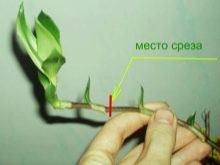
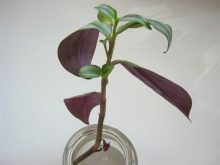
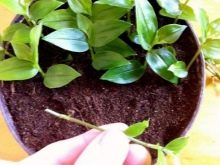
Rooting cuttings
On the hanging branches of Tradescantia, there are always barely noticeable root rudiments. If the shoot "reaches" the soil, then immediately clings to the ground, which is successfully used for reproduction. A pot with a wet substrate is placed next to the main plant, one of the lower shoots is bent to it and fixed to the ground with a hairpin. The roots almost immediately begin to sprout into the soil, a new bush is formed.
The finished rooted bush is cut from the mother plant and grown separately.
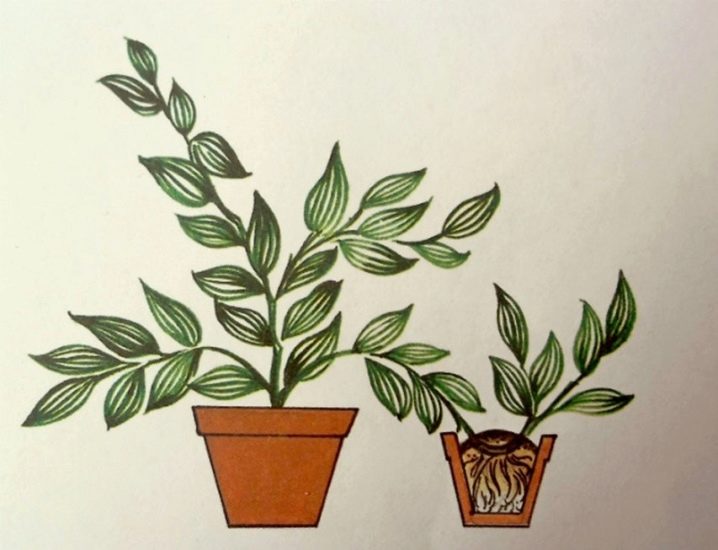
By dividing the bush
This procedure is carried out in the spring. The plant is dug out of the pot, the roots are removed from the soil and cut into pieces with a sharp garden knife. Places of cuts are sprinkled with wood ash (you can use activated carbon) and seated in prepared containers with a substrate.
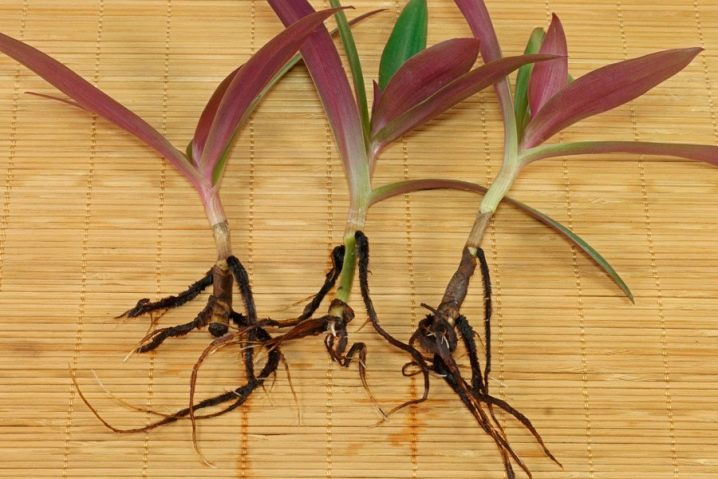
Seeds
This is the longest way. If Tradescantia is propagated by seeds, then 2-3 years will pass from the moment of sowing the seeds to an adult bush. Before planting, the seeds are soaked in a solution of a growth stimulator for several hours, then they are sown at a shallow depth in a container with a moistened soil mixture. The crops are covered with transparent material and placed in a room with a temperature within 20 degrees above zero.
Waiting for the emergence of seedlings, they carefully monitor the conditions of detention (temperature, humidity) and systematically ventilate the improvised "greenhouse". With the emergence of seedlings, the shelter is removed. When 3-4 leaves are formed on the seedlings, they can be transplanted into separate bowls or pots.
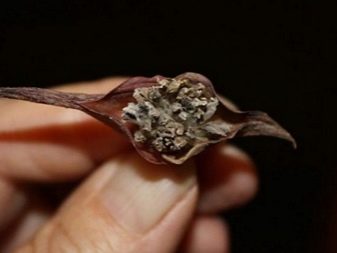
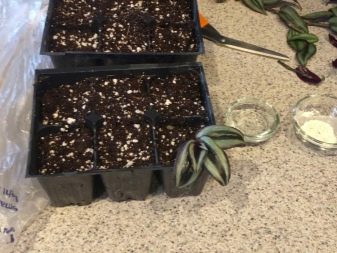
Care features
Despite its remarkable ability to "keep out" the owners, Tradescantia still needs minimal attention and easy care. Monitor the condition of the topsoil, water abundantly in hot weather, drain excess water from the trays, and provide moderate watering in winter.
Do not overdo it with top dressing - Tradescantia is oppressed by the excessive amount of nutrients in the soil, which negatively affects its decorative effect. Apply complex fertilizers at half the rate specified in the recommendations. To maintain the density of the leaves and the beautiful shape of the bushes, young plants are pinched.
If the rules of care are violated, the plants can get sick. Lack of light will lead to "baldness" of the stems, they will begin to stretch, and the leaves will become small and rare. If the air is too dry, the tips of the leaves dry out.
Insufficient watering will be indicated by sluggish stems and leaves, and its excess - their brown tint. Having noticed deviations in the appearance of your favorite plant, correct the situation - follow the care parameters.
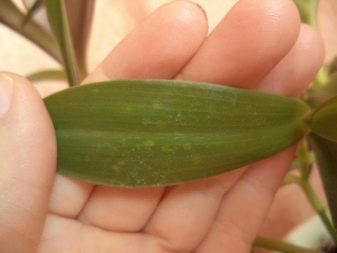

Beneficial features
Tradescantia since ancient times attracted flower growers not only with its subtle original beauty, but also with its medicinal properties:
- gardeners know it as a hemostatic and healing agent for skin lesions;
- if you apply a fresh leaf to the sore spot and make a bandage, the wound will stop bleeding, swelling and bruising will decrease, and minor cuts and scratches will quickly heal;
- it is useful to periodically chew a leaf of tradescantia to prevent gum problems;
- alcoholic infusions are used for lotions in the treatment of injuries and for rubbing sore spots;
- Decoctions of Tradescantia relieve the symptoms of colds in case of throat diseases and ARVI (gargling).

But one should not forget that self-medication is extremely dangerous - preliminary consultation with a specialist is always needed.
Returning home after a long day at work, you will be happy to relax in an atmosphere of coziness and comfort at the sight of well-groomed plants. If you are seriously interested in the cultivation of Tradescantia, it will certainly become an indispensable addition to the collection of plants in the interior of your home or garden.
A great way to breed Tradescantia is in the video below.


























The comment was sent successfully.